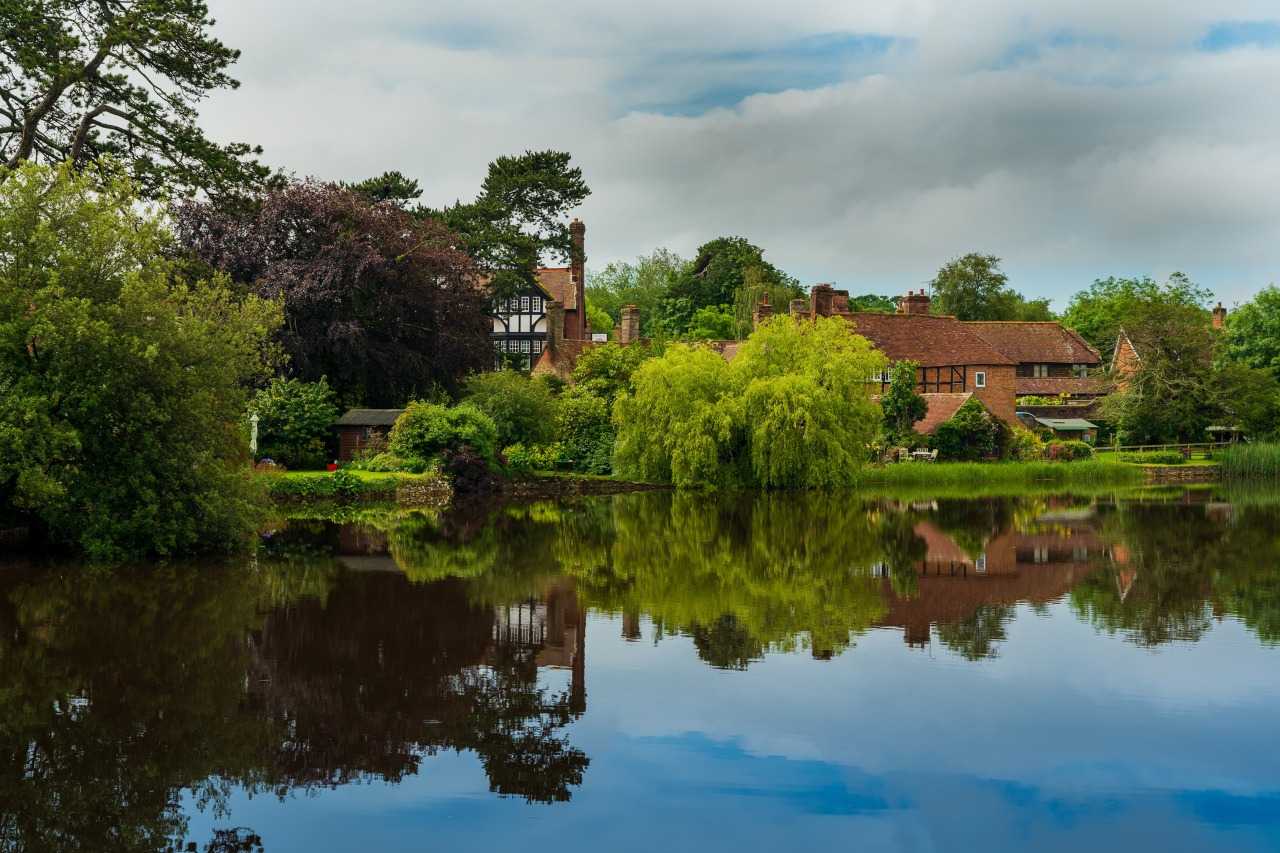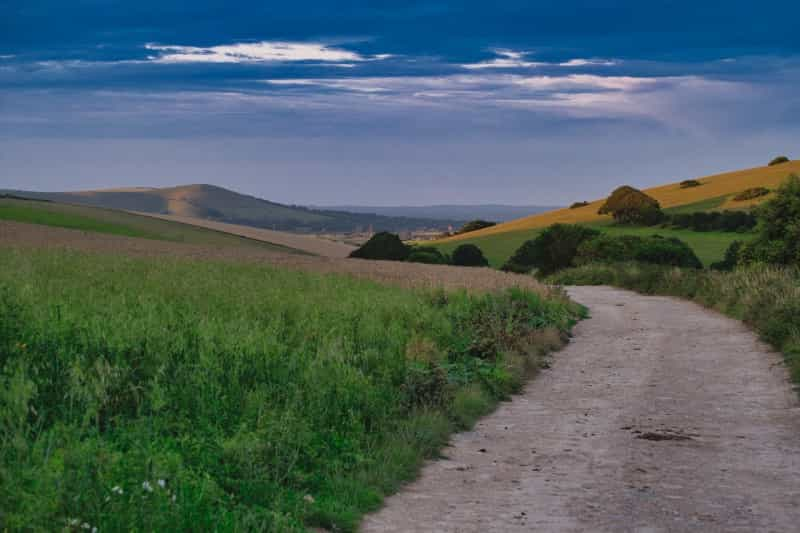5 Of The Best Scenic Walks Hampshire has to offer
Given Hampshire’s abundance of beautiful countryside, ancient woodlands and nature reserves, deciding on a walking route in this intensely scenic county is no easy feat. National parks, rivers, forests, salt marshes, rugged coastline, pretty villages… The options for a stimulating ramble are just as abundant. So whether you’re after short walks, family walks, a circular walk or a long-distance route, here are 5 of the best scenic walks Hampshire has to offer; any one of them would make a fine expedition while on a camping holiday.

New Forest National Park
Hampshire’s most famous and much-adored natural area, the New Forest is a dream for the rambler and camper alike. With over 140 miles of trails, tracks and footpaths, it has something for anyone looking to cover two, five or even ten miles amidst a peaceful woodland atmosphere. It is also home to free-wandering deer, cattle, donkeys, pigs and New Forest ponies (naturally), and has many excellent pubs and cafés to soak in both refreshment and surroundings.
Among its more renowned circuits are Denny Wood, Bolderwood Deer Spotting Walk, Bishop’s Dyke Walk and Brook to Minstead Village Walk.
Denny Wood
This circular 5-mile walk takes you into the heart of the lush New Forest National Park, providing endless opportunities to appreciate its thriving wildlife, many native tree species and wild flora. Survey a variety of landscapes and winding footpaths on a venture that will take you from heathlands to thick forest, climbing banks and crossing footbridges along the way. Although there are several other shorter path runs scored across Denny Wood, its main route is best for enjoying an extended exploration through one of England’s most glorious woodlands.
Choose a campsite in New Forest

The Solent Way Walk
If it’s coastal trekking you prefer, you’ll be hard-pressed to find better than the Solent Way Walk, a 60-mile hike along Hampshire’s edge stretching from Milford-on-Sea to Emsworth Harbour. Stroll the county’s prettiest harbours and deserted coastal marshes, take in the seafront bustle, cosy up in a riverside pub and encounter enough exhilarating views to keep you marching for more.
Notable places to visit include Lymington, Beaulieu village (and Beaulieu river), Hamble and Emsworth, with lots of exploration also to be had in the few forts and castles dotted along the way. And as the county’s jagged coastline often turns to pebble and sand, there will be enough allure in Hampshire’s best beaches, with many of this being dog friendly.
For the naval enthusiast, Hampshire’s coast is naval history with plenty of landmarks to visit. There is Hurst Castle, the spacious artillery fortress built by King Henry VIII, whose strategic location allows some of the most spectacular views of The Solent and Isle of Wight, and, of course, Portsmouth’s Historic Dockyard. Here, you will be at the core of Britain’s naval history.
The HMS Victory, the Mary Rose, HMS Warrior and HMS M.33 are all on display, with dedicated museums, harbour tours, ‘action stations’ and immersive experiences to add to the intrigue.
The Solent Way Walk is divided into eight sections (each with ample car parking facilities), and whether or not you go the full distance, it is sure to provide you with many authentic experiences on this fabulous coastline.
Choose a campsite near Milford-on-Sea

Jane Austen & The Chawton Loop
For book lovers, Hampshire is Jane Austen county and country, where a tour of the Chawton Loop is the best opportunity to explore both the village and surroundings that were once home to this great literary figure. There are several routes to choose from, varying in both distance and feature, with the most popular being the Jane Austen Circular Walk (4.5 miles).
This circuit includes a visit to Austen’s original house (now also a museum), Chawton’s St. Nicholas church, Noar Copse (the highest point, for outstanding views), the village of Farringdon and its Church of All Saints, and the now disused Meon Valley railway line. For refreshments, there is Cassandra’s Cup and the Greyfriars in Chawton, or The Rose & Crown and Golden Pheasant in Farringdon.
Should you prefer a shorter route, take the Jane Austen Trail Walk from Alton to Chawton (1.5 miles), giving you ample opportunity to explore the market town’s many high street sites that were well-known to the author. Visiting the Swan Hotel, the former Bank of (Henry) Austen, Gray & Vincent and the former households of many of Austen’s friends and associates gives a vivid impression of Austen’s world and indeed of daily Hampshire life as it was 200 years ago.
The route finishes at Chawton with a visit to the Austen house where you can visit the rooms she composed in, peruse her personal effects and wander the cottage garden she kept. You might then be interested in visiting the nearby Greyfriar public house for lunch, snacks and local ales.
Further afield, you can explore Austen’s connections with the city of Winchester and Winchester Cathedral and the many landmarks of her life there, including the places of her birth, death and burial.
Finally, a tour of another early 19th-century literary figure’s life may interest the Jane Austen reader via the Keats Walk - Ode to Autumn, also based at Winchester. Here, you can trace the Romantic English poet’s daily route to St. Cross during his stay in the city in 1819, one that will lead you through the pleasant landscapes and water meadows that inspired his famous poem.

South Downs Way National Trail
Up for a longer haul? Take the South Downs Way National Trail. At 100 miles in length, it navigates the South Downs National Park and is Hampshire’s grandest, most flexible trek. From the city of Winchester to Eastbourne, it traverses both country and coast providing throughout its course numerous entry/exit points and endless vistas to admire. Old Winchester Hill, Queen Elizabeth Country Park, Amberley village, Arundel castle and cathedral, Devil’s Dyke and Seven Sisters/Beachy Head are among the grand sites and settings to enjoy along the way, not to mention the 270-metre ascent to Hampshire’s highest point at Butser Hill.
Through woodlands, fields, river valleys and ridges, the South Downs Way is a spectacular showcase of Hampshire’s natural beauty and the most direct route to a fulfilling hiking experience.

Shipwrights Way
The Shipwrights Way is 50 miles of superb trekking trail that winds through some of the most captivating scenery in Hampshire, linking towns and villages from the east of the county to its terminus at Portsmouth Historic Dockyards. As is reflected in the name, the route’s theme is Hampshire’s extensive shipbuilding history which begins (as does the walk) at Alice Holt Forest, a main source of timber in Tudor times.
The route is divided into 12 sections, mostly in three to five-mile intervals, in which walkers will pass through such scenic spots as Borden, Liphook and Liss, as well be immersed in the woodland greenery of both Queen Elizabeth and Staunton country parks. Other places of interest include Hayling Island, Petersfield Museum and the Mary Rose Museum; there are also a number of excellent pubs and cafés along the way for refreshment.
With Hampshire’s scenic richness, it would be easy enough to spend an entire camping holiday simply hiking the days away. But if you’d like to mix your activities up a bit, there are plenty more things to do in Hampshire. Either way, the first step is to get that campsite sorted – so start by having a look at some great options for campsites in Hampshire.